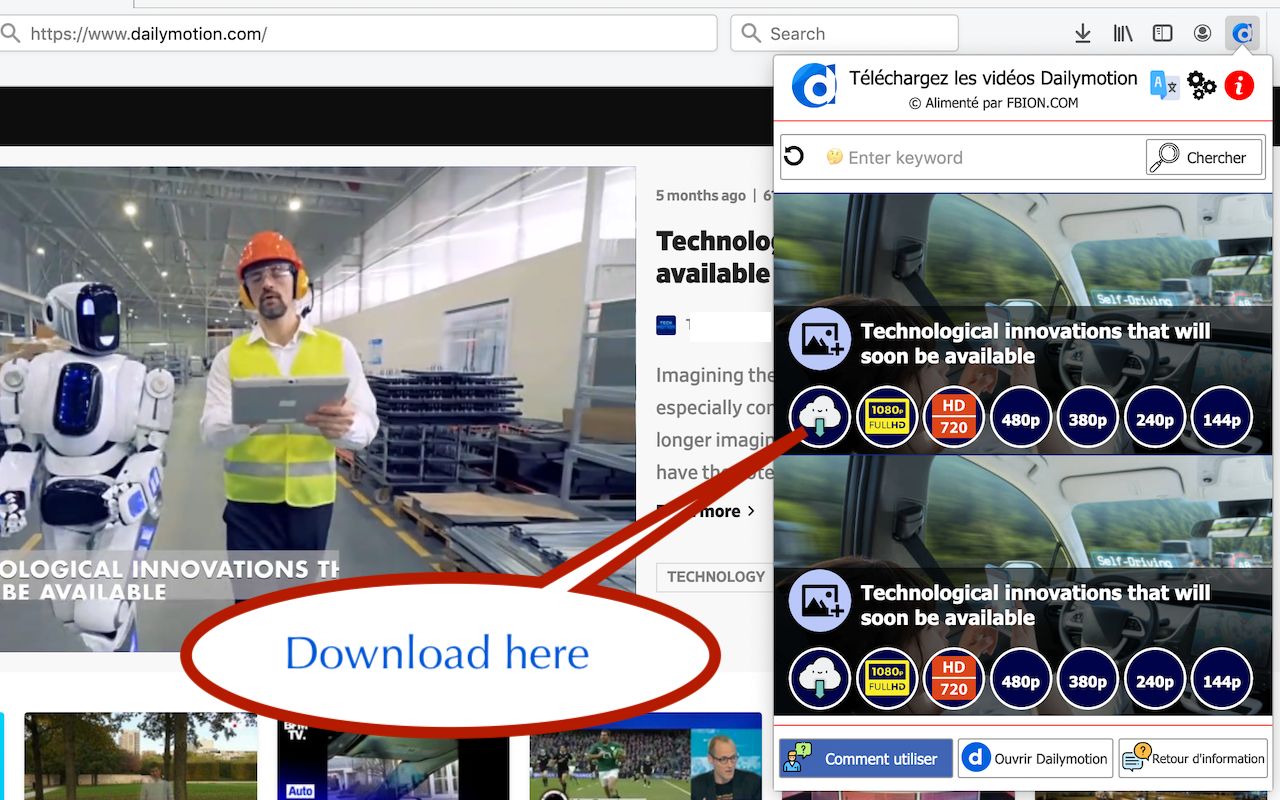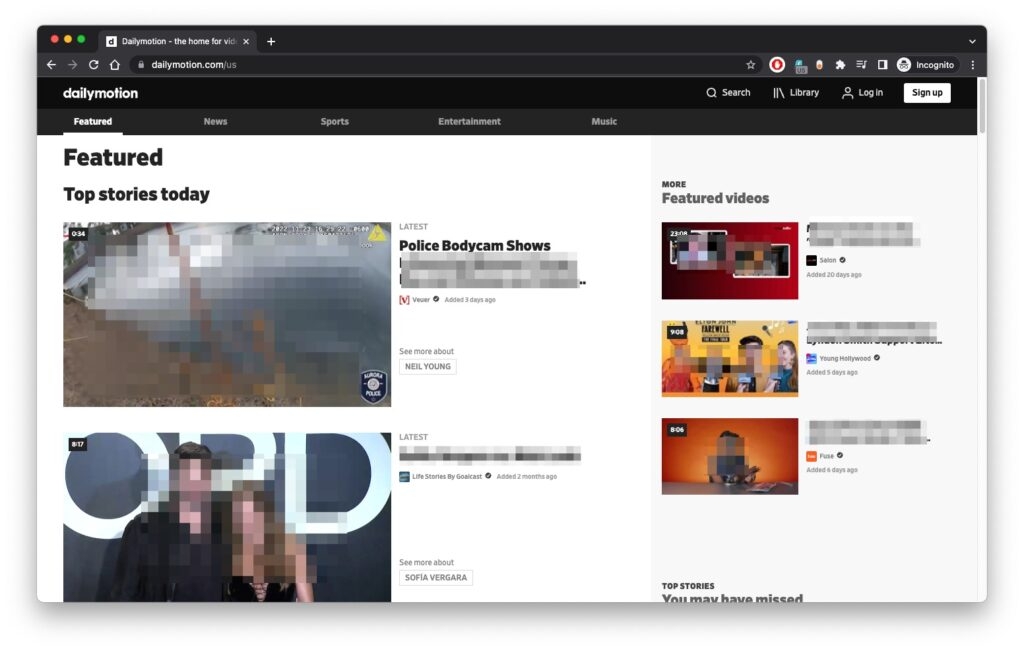In an ever-evolving digital landscape, platforms like Dailymotion continuously seek ways to enhance user experience. One significant change on the horizon involves the phasing out of Flash, a technology that has been a staple for media playback for many years. This blog post delves into the relationship between Dailymotion and Flash, exploring the implications of this possible upgrade and what it means for users and content creators alike.
The History of Dailymotion and Flash

Dailymotion, which launched in 2005, quickly became a go-to platform for video sharing, boasting millions of users worldwide. Initially, Flash technology was integral to the online video experience, allowing users to stream content smoothly. Here’s a brief timeline of how Dailymotion and Flash interlinked over the years:
- 2005: Dailymotion is founded, utilizing Flash to stream videos. This allowed for quick loading and a wide reach.
- 2009-2010: Flash remains the dominant player in video streaming, with Dailymotion heavily relying on it for user uploads and playback.
- 2010: Adobe announces that it will no longer support Flash on mobile devices, marking the beginning of a slow decline for the technology.
- 2017: Major tech companies, including Google and Microsoft, start phasing out Flash support, prompting platforms like Dailymotion to consider alternatives.
- 2020: Adobe officially ends support for Flash Player, forcing many platforms, including Dailymotion, to transition to HTML5.
As the digital world moves forward, Dailymotion recognizes the need for improvements in its technology stack. The move from Flash to HTML5 represents not just a technical upgrade but also a necessary step toward providing better accessibility and responsiveness for users across various devices. With increasing demands for mobile compatibility and improved performance, Dailymotion is gearing up for a brighter, Flash-free future.
Also Read This: How to Use an ATM Card Video on Dailymotion for Understanding ATM Operations
Current Status of Flash Technology

As we dive into the world of online video platforms, understanding the current status of Flash technology is crucial. Flash was once the reigning king of web multimedia, allowing developers to create animations, games, and video playback with ease. However, over the years, there’s been a significant shift in the landscape.
Adobe discontinued support for Flash Player on December 31, 2020. This decision stemmed from various issues associated with Flash, including:
- Security Vulnerabilities: Flash was notorious for its security flaws, making it a target for hackers and malware.
- Performance Issues: Compared to newer technologies, Flash was bloated and often required substantial system resources, which led to slower performance on many devices.
- Lack of Mobile Support: With the rise of mobile computing, Flash was not compatible with popular mobile browsers, leading to its decline.
As a result, most websites have transitioned to HTML5, a more efficient and secure standard for web multimedia. This shift has enriched the viewing experience, offering functionalities like:
- Native support on mobile devices
- Higher performance without additional plugins
- Improved security features
In summary, the status of Flash today is clear: it’s outdated and largely abandoned. Companies are now prioritizing modern, flexible technologies to accommodate user needs in the evolving digital space.
Also Read This: How to Use FTP to Access Adobe Stock
Dailymotion's Transition to Modern Technologies
So, what's the scoop on Dailymotion? Well, the platform is not just another video-sharing site; it's been actively evolving to keep up with technological advancements. As we see the decline of Flash, Dailymotion has made substantial moves toward embracing modern technologies, including HTML5. This transition is about enhancing the user experience and ensuring that the platform stays relevant.
Here are some key aspects of Dailymotion's transition:
- Embracing HTML5: Dailymotion has shifted its video playback to HTML5, allowing for faster loading times, better compatibility across devices, and enhanced viewing experiences without the need for Flash.
- Mobile-first Approach: With the growing number of users accessing content via mobile devices, Dailymotion has optimized its platform for seamless mobile usage, ensuring videos load smoothly on smartphones and tablets.
- Enhanced Security Measures: Transitioning away from Flash helps mitigate many security issues associated with older technologies, protecting both users and content creators alike.
- Integration with Modern APIs: Dailymotion is adopting modern APIs to facilitate smooth content distribution and integration with other social media platforms, making sharing videos easier than ever.
In conclusion, Dailymotion's commitment to modern technology reflects its desire to enhance user experience and maintain relevance in the competitive digital landscape. With the move away from Flash, users can expect a more streamlined and enjoyable experience that aligns with today’s standards.
Also Read This: How to Play Tekken 3 Online with Step-by-Step Dailymotion Videos
Impact of Upgrading on Users and Creators
Upgrading Dailymotion from Flash to a more modern platform can significantly impact both users and creators in various ways. For users, the most noticeable change will be in the viewing experience. With a transition to HTML5, users can expect smoother playback, faster load times, and a more reliable streaming experience, regardless of the device they’re using.
Here are some key impacts on users:
- *Enhanced Video Quality: With modern codecs supporting higher resolution content, users will enjoy crisper, clearer videos.
- Improved Accessibility: HTML5 is widely supported across different devices and browsers, ensuring that everyone can access content without compatibility issues.
- Better User Interface: An updated platform often means a fresher design, which could lead to an easier navigation experience.
- Reduced Buffering: More efficient streaming protocols can minimize interruptions, making for a more enjoyable viewing experience.
For creators, this upgrade may open up new opportunities. It can lead to:
- More Advanced Tools: Creators can take advantage of new features for editing, managing, and promoting their content.
- Expanded Audience Reach: Enhanced accessibility might attract a larger viewer base.
- Higher Revenue Potential:* As user engagement increases, so too can opportunities for monetization through ads and sponsorships.
Overall, the upgrade could foster a thriving community of users and creators enjoying a more dynamic and engaging platform.
Also Read This: Cutting Out an Image in Google Slides
Comparing Dailymotion with Other Video Platforms
When we consider Dailymotion in the landscape of video platforms, it’s essential to understand how it stacks up against the competition. You’ve most likely heard of heavyweights like YouTube and Vimeo, but what sets Dailymotion apart?
Here’s a comparative breakdown of Dailymotion vs. Other Platforms:
| Feature | Dailymotion | YouTube | Vimeo |
|---|---|---|---|
| Content Limitation | Up to 60 minutes per video | No duration limit | Up to 500 MB or 5 GB (depending on plan) |
| Monetization Options | Revenue sharing and ads | Ad revenue, subscriptions, memberships | Subscriptions, tips, and pay-per-view |
| Content Focus | General audience | General audience, niche channels | Creative professionals |
| Video Quality | 4K support | 4K and HDR support | 4K support (higher quality options) |
While Dailymotion doesn't have the vast reach of YouTube, it offers a unique platform for creators focusing on shorter or niche content. Vimeo, on the other hand, caters extensively to professionals looking for high-quality production value, whereas Dailymotion sits comfortably in the middle, appealing to both casual viewers and content creators.
In conclusion, whether Dailymotion can carve out a strong place in the competitive video landscape will depend on how well it aligns its upgrades with the evolving needs of its users and creators. Stay tuned, because this platform just might surprise us!
Is Dailymotion Upgrading Its Platform from Flash?
Dailymotion, a prominent video-sharing platform, has been on a continuous journey to enhance user experience and functionality. Over recent years, there has been an increasing focus on transitioning away from the outdated Flash technology, which has been largely phased out in favor of more modern standards. Here’s a closer look at the steps Dailymotion is taking in this context:
- Enhanced Video Playback: Dailymotion is adopting HTML5 for video playback, which allows for better performance across various devices and browsers.
- Improved User Interface: The platform is undergoing a redesign that emphasizes a more intuitive layout, making it easier for users to navigate and find content.
- Mobile Optimization: With an increasing number of users accessing videos on mobile devices, Dailymotion is prioritizing mobile-friendly features, ensuring that videos load quickly and play smoothly.
- Accessibility Features: The new interface includes enhancements for accessibility, such as subtitle options and improved navigation for visually impaired users.
Transitioning from Flash also aligns with broader industry trends, as many major platforms have moved to HTML5 to ensure compatibility and security. This shift not only benefits viewers but also content creators who can upload higher-quality videos without worrying about compatibility issues.
| Feature | Old System (Flash) | New System (HTML5) |
|---|---|---|
| Video Quality | Limited | High-definition |
| Mobile Compatibility | Poor | Excellent |
| Loading Speed | Slow | Fast |
In conclusion, Dailymotion's move away from Flash toward a more modern, HTML5-based platform highlights their commitment to providing users with a better viewing experience while ensuring security and compatibility across devices.
This HTML content presents a comprehensive look at Dailymotion's upgrade from Flash, utilizing lists, a table, and formatted text to enhance readability and engagement.
 admin
admin








